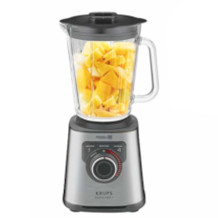Pasta maker purchasing advice: how to choose the right product
- What you need to know
- Pasta makers make it easy to make pasta at home.
- There is a difference between manual, electric, and automatic pasta makers.
- Be it egg pasta, wholewheat pasta, or vegetable pasta – there isn’t a type of dough that pasta makers can’t handle.
- Homemade pasta can be dried and kept for several months.
Pasta galore
Pasta is one of the most loved foods in Britain. On average, everyone in Britain eats pasta at least once a week. For lots of people, a week without pasta would be completely unthinkable. One of the reasons why pasta is so loved is undoubtably its variety. Spaghetti, cannelloni, farfalle, or penne — that’s to name but a few of the different pasta shapes out there. Put it with sauce, throw it in the oven, or just enjoy it with cheese or pesto. Pasta is a guaranteed winner. At its simplest, it is made only from flour and water. Variations on the classic recipe include egg pasta, spelt pasta, and wholewheat pasta, as well as pasta made from beans and pulses. Taking a walk down the dried foods isle in the supermarket can be overwhelming, such is the enormity of the choice available.

Making pasta at home gives you total control over what goes into your pasta. Those who suffer from allergies and intolerances are well advised to keep an eye on what goes into their food. To make pasta as simply and as gratifyingly as possible, a pasta maker is a must have accessory.
What is a pasta maker
A difference is made between manual, electric and automatic pasta makers. With manual machines, the pre-made pasta dough is pressed between two rollers. After being repeated a few times, the dough is flat enough to be made into whatever shape of pasta you want. This can be done with a special attachment, usually used to make spaghetti or tagliatelle. If you want to make lasagne, the dough can be left in sheet form. With a manual model, the rollers are moved by a crank handle. This is done automatically with an electric model. An automatic pasta maker, meanwhile, simply requires that you fill it up with the correct ingredients for the dough. The mixer then mixes and kneads automatically. The last step works something like a meat grinder, as the dough is pressed through a stencil or mould.
How do the different models work?
The choice between a manual, electric, or automatic pasta maker depends on a few different factors. For occasional users, a manual machine is probably the best option. If, however, you are looking to invest a bit more money whilst saving yourself some effort, then an automatic pasta maker is perhaps a more attractive option.

Manual pasta makers
Manual pasta makers work with the help of two rollers which are used to press the dough into the correct form for cutting. Compared to other pasta makers, they are usually significantly lighter. Most don’t come with their own stand. Instead, they attach to a table or work bench with the help of special clamps. Make sure that your pasta maker is made from stainless steel, if possible. Stainless steel is extremely robust and can be easily cleaned with a damp cloth. Special cleaning tools often come included with a new machine.

Electric pasta maker
Manual pasta makers work with the help of two rollers which are used to press the dough into the correct form for cutting. Compared to other pasta The electric motor of an electric pasta maker ensures that the pasta is rolled quickly and evenly. Electric pasta makers require barely any effort to use, making them a comfortable option. Some machines are a kind of hybrid between manual and electric models. With these models, a motor can be attached and removed at will. The motor generally plays an important role depending on what type of dough you are making. When making wholewheat pasta, for example, you need to use a strong motor.
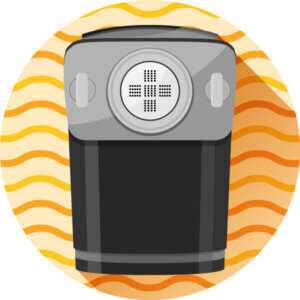
Automatic pasta machines
Automatic pasta machines are a practical but expensive way to make pasta without lifting a finger. The length of the kneading or proofing time for the dough can be controlled using a digital display. Once you have added the ingredients, the rest is all done by the machine. Some machines come with a weighing function, meaning that you don’t even need to use a kitchen scale to measure your ingredients. Stirring bowls come in different sizes. Most models can hold 300 grams of dough, although some can hold twice this amount.
The pros and cons of different pasta makers
Manual and electric models are significantly cheaper than automatic versions. For this reason, manual models lend themselves far better to occasional use. They are lightweight and easy to store, while they can be cleaned simply with a wet cloth. Making pasta with an automatic pasta maker is significantly quicker and easier than with their non-automatic counterparts. Mixing, kneading, and rolling are all adjustable with the click of a button. This gives you time to get on with more important things. The individual parts can be disassembled and washed in a dishwasher, making cleaning child’s play. Most models come with at least two or three different mould shapes, while some manufacturers have even more. The only downside of an automatic machine is the price. They are only truly cost-effective if they are used a lot.
Kitchen machine accessories
Some manufacturers of all-purpose kitchen machines offer pasta-making accessories for their products. This attachment allows you to press and shape the dough into pasta.
How much should one cost?
Manual pasta makers are cheaper than electric ones and are perfectly suited for occasional use. Even known-brand models are often available for less than £90. Doing a price comparison can be particularly useful if you are looking to buy a motorised model. The motor which can be attached to a manual pasta maker can often cost just as much as a fully electric model. Automatic machines are generally a lot more expensive, costing up to around £900. The price depends largely on how many added features you want for your machine.
Making pasta dough
Making pasta dough yourself is a simple process. All you need to do, is mix 400 g of flour or semolina with about 150 ml of water and there you go; your dough is ready. Original Italian pasta is only ever made from these two ingredients. In Germany, egg is often added to give pasta its distinctive colour and aroma. Some people also choose to add a tablespoon of oil.
Italian pasta is usually a little bit more al dente. Durum wheat flour “00” is particularly loved in Italy. This kind of flour is especially fine, helping it to absorb water and make the dough smoother. Spelt and wholewheat flour can be used as alternatives to white flour. Chickpeas and lentils can also be ground into a low-carbohydrate, protein-rich flour used to make vegetable pasta.
Water can be added gradually if the dough is too tough. Getting the perfect texture for your dough is not something that most people master overnight. If your dough is too moist, then it is liable to getting stuck between the rollers. If it is too dry, however, it can crack and be difficult to correctly cut. Dough should be covered by clingfilm and left to rise for half an hour before it can be processed. As long as it doesn’t contain egg, fresh pasta can be kept in the fridge for two to four days. Due to the risk of salmonella contamination, pasta containing egg needs to be eaten straight away.
Simple pasta recipe
- 400 g of flour or semolina flour
- 150 ml of water
- 4 eggs (if needed)
- 1 tablespoon of oil
Pasta dryer
If you want to keep pasta for longer than a few days, it is recommended that you use a pasta dryer. Spaghetti and band noodles can be hung on a pasta dryer, like on a clothes dryer. After one to two days at a normal room temperature all the moisture should have evaporated from the noodles. Once dried, they can then be stored for several months.
History and diversity of pasta
Although Italy is usually considered to be the birthplace of pasta, the Italians cannot claim to be its sole inventors. Findings from China have shown that noodles were being made there thousands of years ago. Rumours have circulated which suggest that it was the Italian explorer Marco Polo who first bought the recipe for pasta back to Europe after his travels in the 13th century. Despite these claims, it is also thought that the Romans and the Greeks ate pasta centuries earlier.
It is not unimaginable that two cultures could combine flour with water (two of the cheapest possible ingredients the world over) independently from one another. Just as with pizza, pasta was considered peasant food for a long time. The pasta that we can buy today comes in an incredible number of different shapes and sizes; from tubes and pipes to alphabetti spaghetti! Ravioli and tortellini, meanwhile, are filled with meat, vegetables or cheese. Most of us know spaghetti as the most recognisable form of pasta. Served with tomato, Bolognese, or creamy sauces — spaghetti is a firm family favourite.

Pasta — not just for the Italians
British cuisine has adopted pasta as a cheap and quick dinner fix. Although the Italians may turn up their noses, jarred pasta sauces and quick-cook pasta has sustained some of the country’s finest minds through their formative years out of the parental household. Perhaps most beloved of all is the ubiquitous ‘spag bol’. Loosely resembling an Italian ragu, spaghetti bolognese recipes pass down through generations and can cause riffs between even the closest of friends.
Gnocchi are another popular form of pasta, albeit not in the classic sense of the word. Wheat or cornmeal is mixed with mashed potato and then formed into little oval shapes. Pumpkin, chestnuts or herbs can also be added, depending on the preparation method. Gnocchi are also popular in Eastern European cuisine.
Chinese noodles can be made either from wheat flour or occasionally from rice flour. This form of noodle has spread all across South-East and East Asia. Instant noodles are perhaps the most recognisable of these in the West. They are commonly served with vegetables, meat, or tofu, and fried in soy sauce. Ramen and udon noodles were both invented in Japan and are often eaten as fast food. They are usually served in a soup with vegetables, meat, eggs, or fish.
Image 1: © Pixel-Shot / stock.adobe.com | Images 2-4: © FinalCheck | Image 5: © Achim Kietzmann / stock.adobe.com

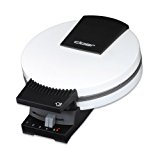
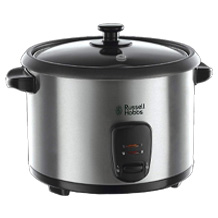
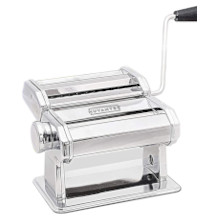
















 23,096 reviews
23,096 reviews
